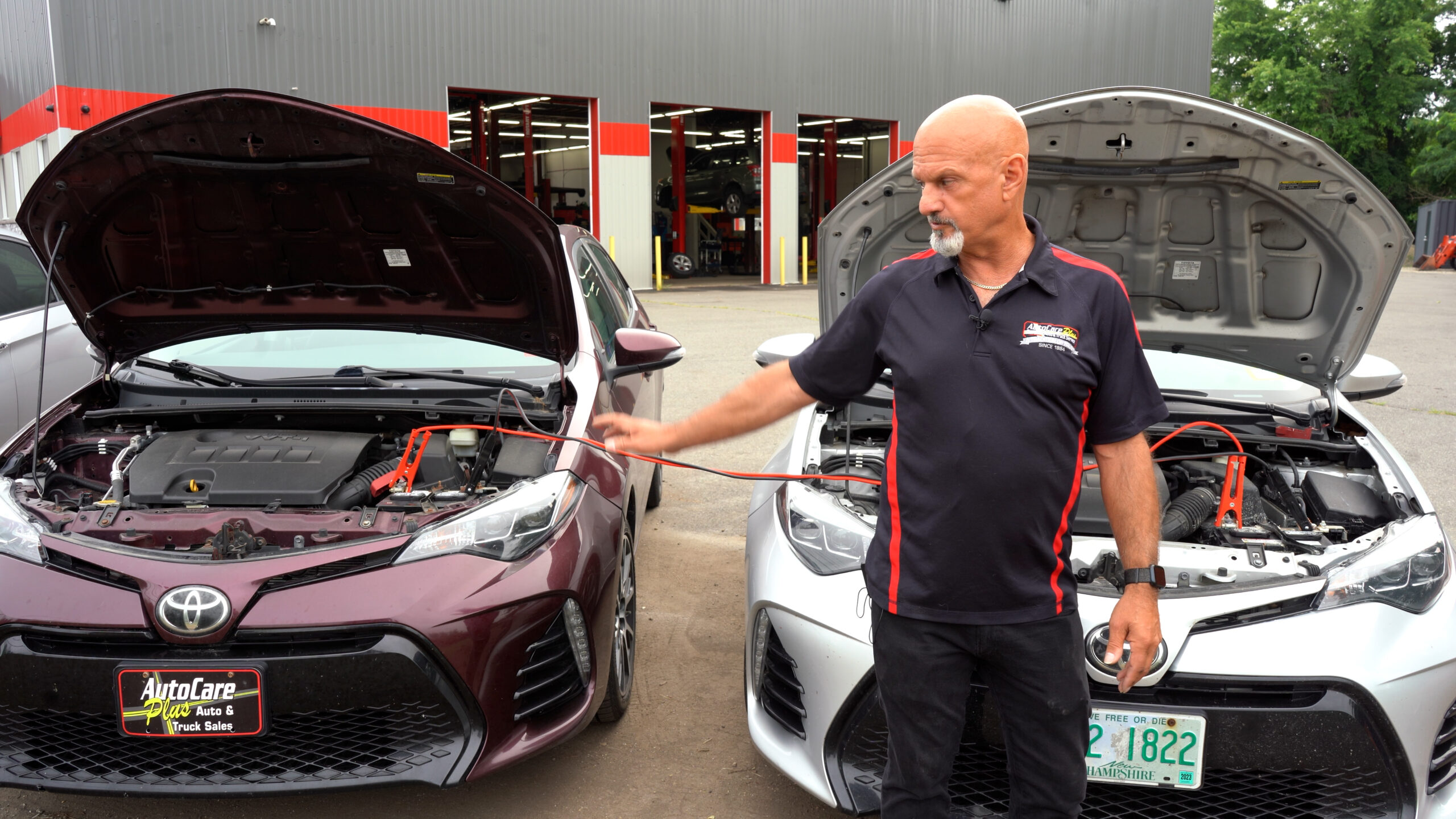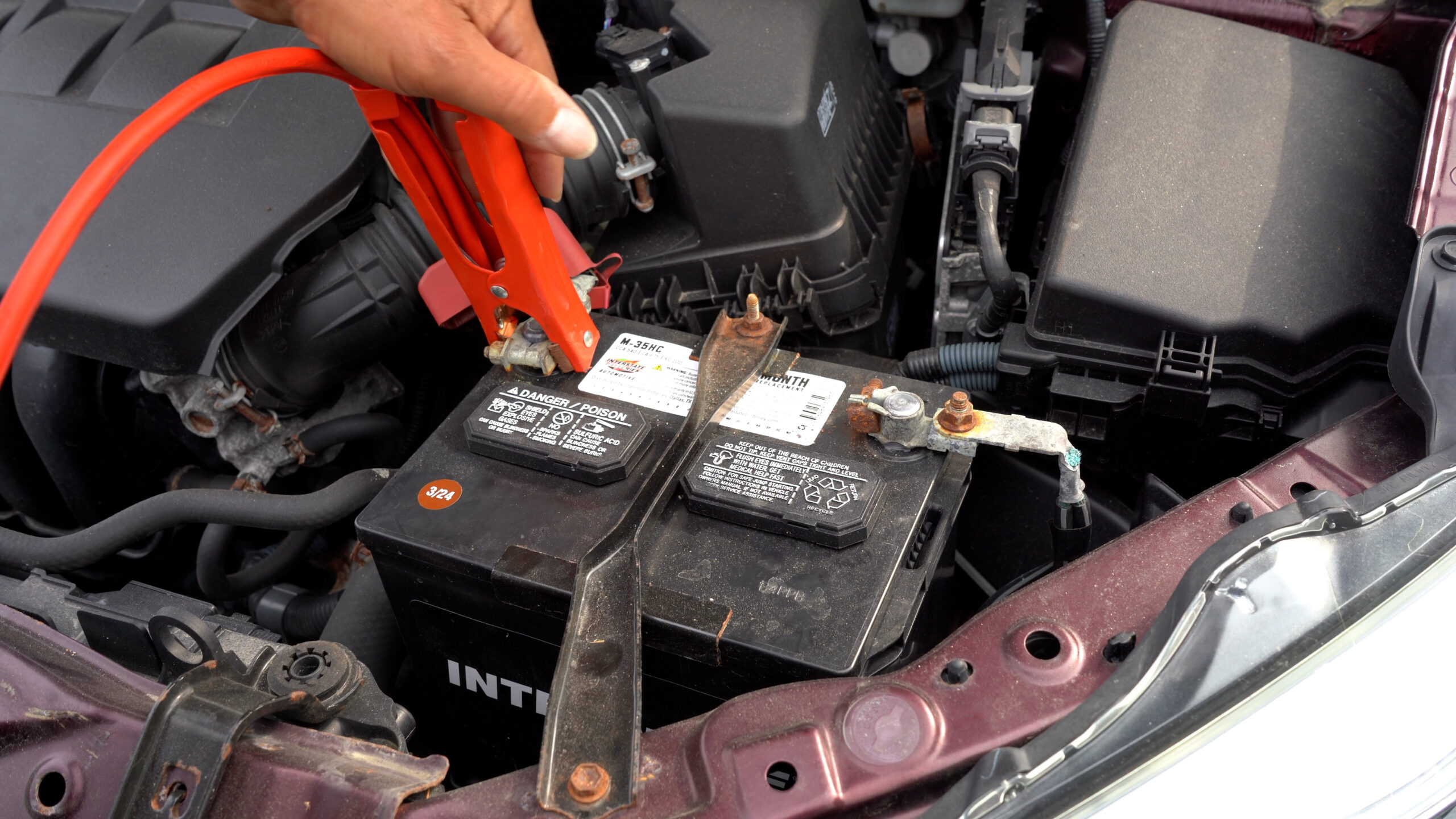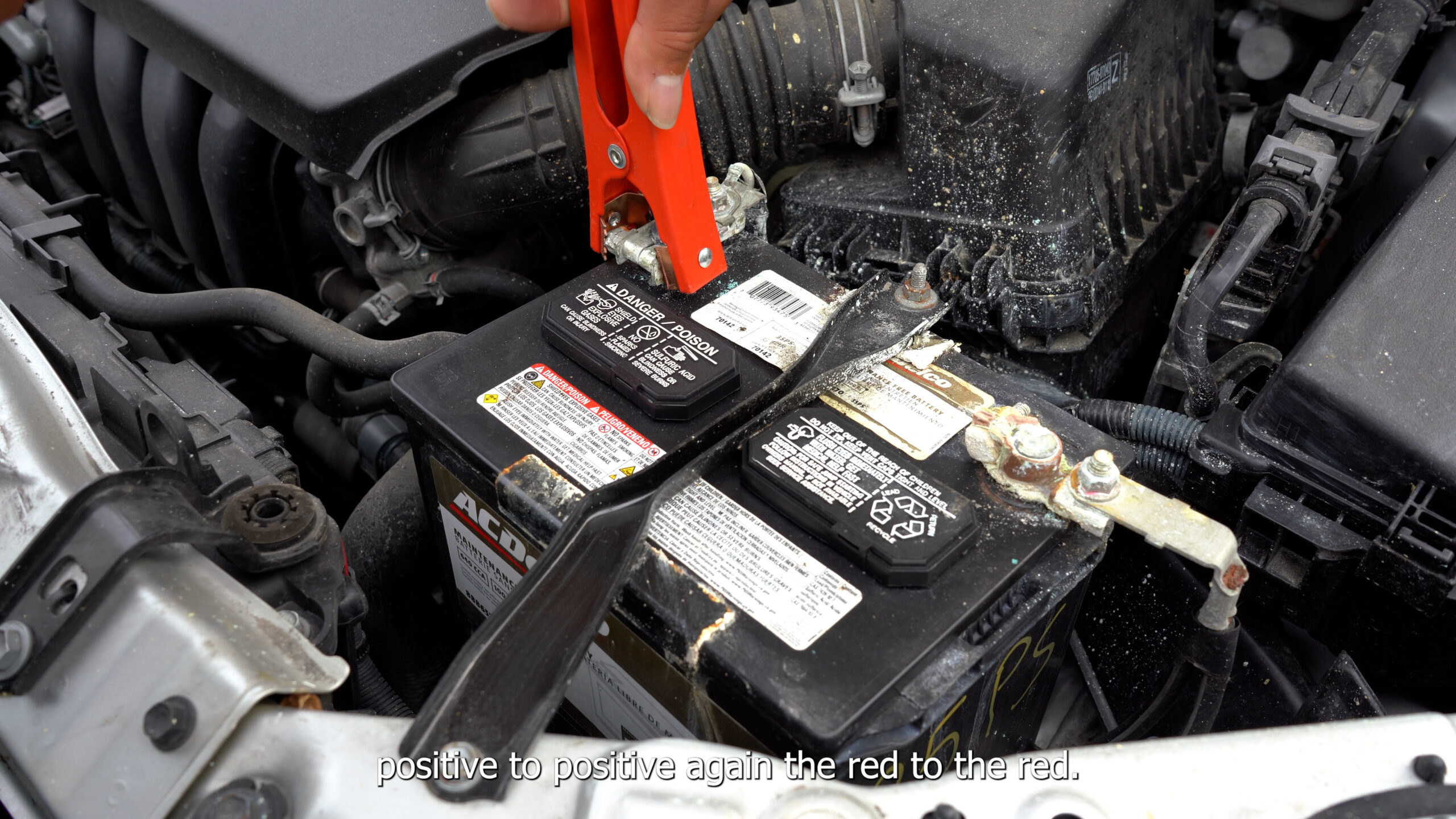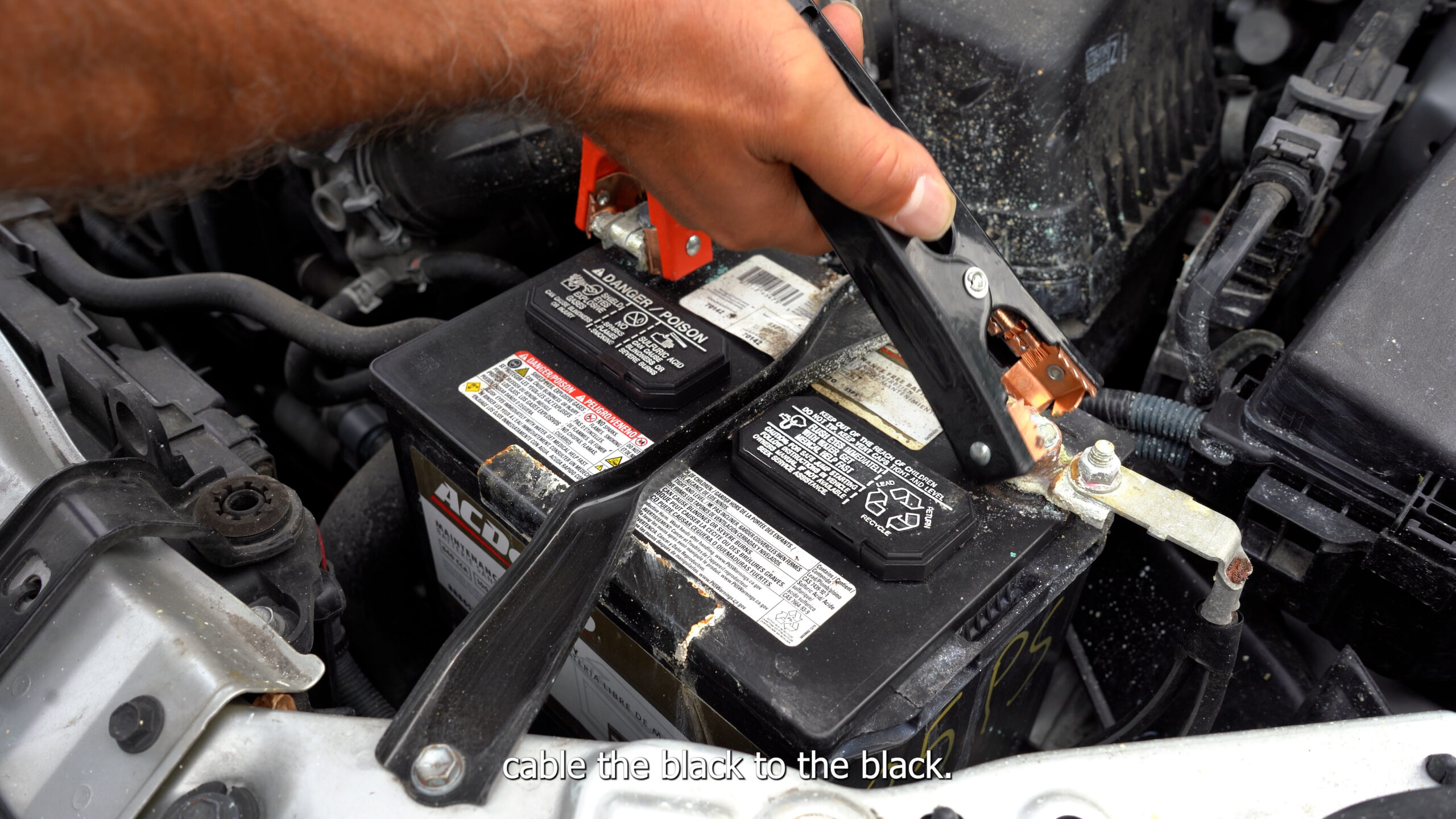Few things are more frustrating than turning the key in your car’s ignition, only to hear nothing but clicking or the dreaded silence. A dead battery can catch you off guard, but the good news is that jump-starting a car is a straightforward process that can get you back on the road quickly. In this week’s blog, John walks you through the essential steps to safely jump-start a dead car, what tools you’ll need, and some important safety tips to keep in mind.
What You’ll Need:
1. Position the Vehicles
Park the working vehicle next to the dead car, ensuring they’re close enough for the jumper cables to reach both batteries. Make sure both cars are turned off, with their parking brakes engaged. It’s also a good idea to turn off any accessories, like lights or radios, to avoid electrical surges.

2. Attach the Jumper Cables:
Take out your jumper cables and attach them in the following order:
a. Red Clamp to Dead Battery: Attach one red (positive) clamp to the positive terminal (+) of the dead battery.

b. Red Clamp to Live Battery: Attach the other red clamp to the positive terminal (+) of the working battery.

c. Black Clamp to Live Battery: Attach one black (negative) clamp to the negative terminal (−) of the working battery.

d. Black Clamp to Dead Battery: Attach the remaining black (negative) clamp to the negative terminal (−) of the dead battery.

3. Start the Working Vehicle:
Start the vehicle with the good battery and let it run for a few minutes. This allows the dead battery to charge up enough to start the car.
4. Start the Dead Vehicle:
After a few minutes, try starting the car with the dead battery. If it starts, great! Let it run for a few minutes to build up the charge. If it doesn’t start, double-check the connections and give it a few more minutes before trying again.
5. Disconnect the Jumper Cables:
Once the dead car is running, carefully remove the jumper cables in the reverse order:
Step 1: Black Clamp from Dead Battery: Remove the black clamp from the negative terminal of the dead battery.
Step 2: Black Clamp from Live Battery: Remove the black clamp from the negative terminal of the live battery.
Step 3: Red Clamp from Live Battery: Remove the red clamp from the positive terminal of the live battery.
Step 4: Red Clamp from Dead Battery: Finally, remove the red clamp from the positive terminal of the dead battery.
6. Keep the Car Running:
To ensure the battery recharges, keep the jump-started car running for at least 15-30 minutes. If possible, take a drive to help the alternator recharge the battery more effectively.
Important Safety Tips:
Avoid Sparks: Never let the jumper cable clamps touch each other or other metal surfaces while attached to the batteries.
Check Your Battery: If your car’s battery is old or has been jump-started multiple times, it’s time for a battery replacement service.
Know When to Call for Help: If the car doesn’t start after several attempts or if you notice any smoke or strange noises, it’s best to call your trusted professional.
Jump-starting a dead car is a useful skill that every driver should know. By following these simple steps and safety precautions, you can get back on the road quickly and safely. If you find yourself frequently dealing with a dead battery, it might be time to have your vehicle checked by a professional. Don’t hesitate to visit one of our locations for a thorough inspection and battery check-up.
Happy driving!
You can explore our entire Auto Care Library
Subscribe to our YouTube Channel




